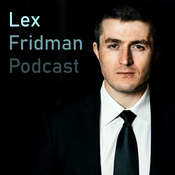707 episodes

Bitcoin Network Monitoring with B10C | SLP707
19/12/2025 | 1h 22 mins.
In this episode, B10C discusses his work in the Bitcoin ecosystem, focusing on the importance of censorship resistance, the role of mining pools, and the implications of OFAC sanctions on Bitcoin transactions. He introduces the Peer Observer project aimed at monitoring the Bitcoin network for anomalies and attacks, and highlights the need for a collaborative approach to Bitcoin network operations through the Bitcoin Network Operations Collective.Takeaways:🔸B10C has been working on Bitcoin open source projects since 2021.🔸Research on mining pools reveals they may filter out certain transactions.🔸Censorship resistance is a key feature of Bitcoin that needs monitoring.🔸The Bitcoin network lacks a professional monitoring system compared to large companies.🔸The Peer Observer project aims to detect attacks on Bitcoin nodes.🔸Monitoring tools can help identify anomalies in the Bitcoin network.🔸The Bitcoin Network Operations Collective is a forum for collaboration on network monitoring.🔸Compact block relay improves block propagation efficiency.🔸Different mining pools have varying policies on transaction inclusion.🔸The future of Bitcoin monitoring relies on community collaboration.Timestamps:(00:00) - IntroLinks: https://x.com/0xb10c https://b10c.me/ Sponsor:CoinKite.com (code LIVERA)Stephan Livera links:Follow me on X: @stephanliveraSubscribe to the podcastSubscribe to Substack

Start your career in Bitcoin with ₿OSS Challenge with Satsie, Macgyver and Sangbida | SLP706
16/12/2025 | 40 mins.
In this episode the discussion revolves around the BOSS program (Bitcoin Open Source Software), which offers a 30-day series of technical programming exercises aimed at engaging participants in Bitcoin protocol development. The guests, Satsie, Sangbida, and Ron, share their backgrounds, motivations for joining the program, and experiences throughout the challenges. They discuss the impact of the program on their careers, the importance of community support, and the unique environment of open source development. The conversation also touches on the challenges of grant applications and the mindset required to succeed in this field. The episode concludes with advice for potential participants, encouraging them to take the leap and apply for the program.Takeaways:🔸The BOSS program is a free opportunity for learning Bitcoin development.🔸Participants come from diverse backgrounds, including IT and finance.🔸The program is gamified to keep participants motivated.🔸Community support is crucial for success in the program.🔸Contributing to Bitcoin open source is seen as ethical and impactful.🔸The experience in open source differs significantly from corporate environments.🔸Grant applications require a proactive approach and clear proposals.🔸Imposter syndrome is common but can be overcome with dedication.🔸Feedback from the community is direct and valuable for developers.🔸Working in open source can lead to fulfilling and autonomous careers.Timestamps:(00:00) - Intro(01:21) - What is the BOSS program?; Sangbida & Macgyver’s journey with BOSS(04:07) - Participant’s motivation & experiences with the BOSS program(09:00) - What are the career opportunities for Bitcoin developers after the BOSS program? (12:57) - Challenges of learning & working in open source(16:53) - What are Sangbida & Macgyver currently working on?(18:25) - What is it like applying for grants and funding in open source?(19:48) - Sponsor(23:12) - The role of community engagement in open source(25:16) - Skills and mindset required to thrive in open source(30:23) - Working in Bitcoin - passion vs. reality(38:13) - Closing thoughtsLinks: https://x.com/satsie https://bosschallenge.xyz/ https://bitcoindevs.xyz/ https://x.com/Bitcoin_Devs BOSS Challenge: https://x.com/i/status/1996282354969858301 Sponsor:CoinKite.com (code LIVERA)Stephan Livera links:Follow me on X: @stephanliveraSubscribe to the podcastSubscribe to Substack

Floresta: Making Bitcoin Node Verification Accessible with Davidson Souza | SLP705
14/12/2025 | 1h 3 mins.
In this conversation, Davidson, a Bitcoin developer, discusses his project Floresta, which aims to provide a lightweight Bitcoin node solution that balances privacy, security, and usability. He explains the technical aspects of Floresta, including its architecture, the use of compact block filters, and its relationship with Utreexo. Davidson emphasizes the importance of making Bitcoin more accessible to non-technical users while maintaining security and privacy. The discussion also touches on the challenges of running Bitcoin nodes, the potential integration of Floresta with existing applications, and the future of Bitcoin technology.Takeaways:🔸Floresta aims to provide lightweight Bitcoin nodes with better trade-offs.🔸The project is designed for non-technical users who want to run their own nodes.🔸Privacy and security are key concerns in Bitcoin transactions.🔸Floresta uses compact block filters to enhance user experience.🔸The architecture of Floresta allows for easy integration with existing wallets.🔸Proof of work fraud proof offers a new way to validate blocks.🔸Floresta is a library that can be embedded in other applications.🔸User experience is crucial for wider adoption of Bitcoin technology.🔸Feedback from users is essential for improving Floresta.🔸The project has received positive reception, indicating a demand for lightweight solutions.Timestamps:(00:00) - Intro(01:04) - Who is Davidson Souza? (01:39) - What is Floresta?(03:40) - Floresta tradeoff for the end user (08:08) - How does a Utreexo-powered Electrum server work?; Neutrino (BIP 157,158) (12:00) - Feasibility for mobile devices(14:47) - Which script types does Floresta support? (15:50) - Who is the target audience of Floresta? (20:18) - Could Floresta be built into existing Bitcoin phone apps? (22:22) - How does Floresta work? (27:53) - What’s the goal of ‘Proof of Work Fraud Proof’?(29:26) - Sponsor(34:24) - Who are ‘honest miners’?(36:05) - Proof of Work Fraud Proof vs. SPV vs. IBD model (42:50) - The relationship between Floresta and Utreexo; Rich nodes & compact state nodes(51:12) - What will be the cost & accessibility challenges to run a Floresta node? (56:23) - Is Floresta compatible with Bitcoin’s Layer 2 protocols? (59:15) - Using Floresta in real life(1:01:32) - Closing thoughts Links: https://x.com/Erik17192799 https://github.com/vinteumorg/floresta https://blog.dlsouza.lol/2023/09/28/pow-fraud-proof.html https://blog.dlsouza.lol/2023/09/28/new-floresta-wire.html Sponsor:CoinKite.com (code LIVERA)Stephan Livera links:Follow me on X: @stephanliveraSubscribe to the podcastSubscribe to Substack

Multisig Bitcoin custody for businesses with Kevin Loaec | SLP704
05/12/2025 | 1h 1 mins.
In this conversation, Stephan Livera and Kevin Loaec discuss the challenges and advancements in self-custody and multi-signature (multisig) wallets for businesses. They explore the reasons why many businesses are hesitant to adopt self-custody, including regulatory constraints and the current limitations of available tools. The discussion highlights the evolution of multisig, the risks associated with centralized custodians, and the introduction of Liana Business as a tailored solution for businesses looking to implement multi-sig setups. They also dive into the importance of defining roles within a multisig framework, the mechanisms for recovery, and the future of recovery paths in Bitcoin. Kevin also shares various aspects of Bitcoin custody, focusing on time locks, key management, and the importance of recovery pathways for businesses. He emphasizes the need for user-friendly solutions that mitigate risks associated with key loss and the complexities of managing multiple wallets. The discussion also touches on the role of insurance in Bitcoin custody, the potential threats posed by large custodians, and the challenges of maintaining privacy while reusing keys across different setups. Takeaways:🔸Businesses often avoid self-custody due to regulatory concerns.🔸The tools for self-custody are still not user-friendly enough for many businesses.🔸Multisig wallets have evolved but still require technical knowledge.🔸Centralization of funds in custodians poses significant security risks.🔸Liana Business offers tailored solutions for business self-custody needs.🔸Recovery pathways are crucial for ensuring access to funds.🔸Insurance options can mitigate risks associated with key loss.🔸Employee turnover can complicate key management in businesses.🔸Replay protection is essential to prevent loss during forks.🔸Future corporate custody solutions may involve hybrid models with banks.Timestamps:(00:00) - Intro(01:06) - Why aren't businesses doing self custody right now? (02:55) - Evolution of multisig and Hardware Wallets(07:51) - Are there centralization risks with custodians?(10:24) - What is Liana Business?(13:11) - Multisig configurations with Liana(15:24) - Is Liana business optimal for businesses of all sizes?(17:31) - How does Liana Business address role-based governance?(25:03) - What are some of the recovery mechanisms in Liana?; Recovery paths (29:04) - Understanding Time Locks and Wallet Management(31:02) - Sponsor(32:00) - Who are the key holders while setting up Liana business?; Insurance in Bitcoin custody(37:06) - How should businesses manage key loss?(38:47) - What are some of the threat vectors in Bitcoin custody? (41:07) - What are the privacy concerns with hardware key reuse? (48:23) - Seamless key management for businesses(53:40) - What is Liana business’s USP?(55:27) - What is the future of corporate Bitcoin custody? (58:49) - Balancing convenience and security in Bitcoin custodyLinks: https://x.com/KLoaec https://x.com/lianabitcoin https://lianawallet.com/business/ https://x.com/wizardsardine Sponsor:CoinKite.com (code LIVERA)Stephan Livera links:Follow me on X: @stephanliveraSubscribe to the podcastSubscribe to Substack

Bitcoin Spam: A Libre Relay View with Proof of Cash | SLP703
17/11/2025 | 2h 28 mins.
Stephan Livera and Kevin Cai dive into the Bitcoin spam debate, breaking down the different camps in the community, the line between consensus and policy, and how transaction filters, dust limits, and Libre Relay affect the network. They explore mining economics, fee dynamics, and the subjective nature of what people call spam.Kevin also discusses UTXO consolidation, decentralization, and how BRC-20 activity impacts the fee market. He explains the cultural differences behind spam opinions and the broader implications for Bitcoin’s ecosystem.The conversation covers the challenges of Bitcoin development, including concerns around temporary fixes like RDTS, and why programmability matters for Bitcoin’s future utility.Takeaways:🔸The Bitcoin spam debate involves different camps with varying perspectives.🔸Consensus refers to the agreement needed for transactions to be valid, while policy is more subjective.🔸Libre Relay aims to align consensus with policy, promoting censorship resistance.🔸Filters can influence transaction behavior, but their effectiveness is debated.🔸Dust limits are a contentious topic, with arguments for and against their implementation.🔸Transaction fees are influenced by market dynamics and user behavior.🔸The Bitcoin network's resilience is tied to its decentralized nature and redundancy.🔸Subjective judgments about transactions can lead to disagreements within the community.🔸The future of Bitcoin transaction policies will likely evolve based on economic incentives and user behavior. I have a high time preference.🔸Blocking inscriptions is unlikely to succeed.🔸Libre Relay offers a low-friction solution for transactions.🔸The role of miners is driven by economic incentives. Temporary fixes may lead to wasted time and effort.🔸Bitcoin's permissionless nature allows for innovation without approval.🔸Auto-updates contradict Bitcoin's ethos of user control.🔸The RDTS poses risks to user transactions and programmability.🔸Confiscatory risks arise from the RDTS's limitations.🔸Programmability is crucial for Bitcoin's future applications.🔸Arbitrary data embedding is inherent to communication systems.Timestamps:(00:00) - Intro(01:49) - What are the different camps in this debate?(04:55) - What is consensus and how is it different from policy? (11:23) - Libre Relay and its role in Bitcoin(15:53) - Are certain transactions strictly harmful?(19:30) - Do Dust filters work?; Dust limits and their implications(29:59) - Orphan rates & mining dynamics(35:14) - What is Spy mining? (38:14) - Can all the small miners gather to punish spam on Bitcoin?; Decentralizing mining (43:40) - Do Bitcoin miners shape reality? (47:18) - Sponsor(48:13) - What constitutes spam in Bitcoin? (56:09) - Cultural perspectives on Bitcoin and spam(1:03:15) - Are miners short-term focussed?; Bitcoin’s robust fee market (1:11:39) - The unsustainable nature of hype (1:19:50) - What are the hardware costs of running a node?; Connectivity & accessibility for Bitcoin nodes(1:29:00) - Spam - incremental costs & time of transaction confirmation(1:36:40) - Is it cost & time intensive for spammers to run Libre Relay?(1:42:00) - What are the legal perspectives of data embedding in Bitcoin?(1:49:47) - Is it feasible to block inscriptions?; Dilemma of temporary fixes(2:01:50) - Kevin’s thoughts on RDTS (Reduced Data Temporary Softfork)(2:21:53) - Is programmability important in Bitcoin?(2:27:40) - Closing thoughtsLinks: https://github.com/djkazic https://x.com/ProofOfCash https://lightning.engineering/team/ Sponsor:CoinKite.com (code LIVERA)Stephan Livera links:Follow me on X: @stephanliveraSubscribe to the podcastSubscribe to Substack
More Technology podcasts
Trending Technology podcasts
About Stephan Livera Podcast
Listen to Stephan Livera Podcast, Shell Game and many other podcasts from around the world with the radio.net app

Get the free radio.net app
- Stations and podcasts to bookmark
- Stream via Wi-Fi or Bluetooth
- Supports Carplay & Android Auto
- Many other app features
Get the free radio.net app
- Stations and podcasts to bookmark
- Stream via Wi-Fi or Bluetooth
- Supports Carplay & Android Auto
- Many other app features


Stephan Livera Podcast
download the app,
start listening.




































